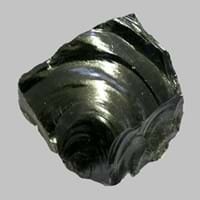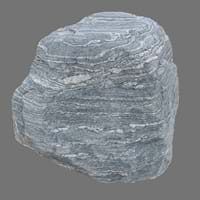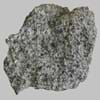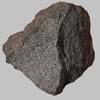Definition
Obsidian is a naturally occurring volcanic glass formed as an extrusive igneous rock. It is produced when felsic lava extruded from a volcano cools rapidly with minimum crystal growth
Migmatite is typically a granitic rock within a metamorphic host rock which is composed of two intermingled but distinguishable components
Origin
Ethiopia
Southern Alps, France
Discoverer
Obsius
Jakob Sederholm
Etymology
From Latin obsidianus, misprint of Obsianus (lapis) (stone) of Obsius
From the Greek word migma which means a mixture
Class
Igneous Rocks
Metamorphic Rocks
Sub-Class
Durable Rock, Medium Hardness Rock
Durable Rock, Medium Hardness Rock
Group
Volcanic
Not Applicable
Other Categories
Opaque Rock
Coarse Grained Rock, Fine Grained Rock, Medium Grained Rock, Opaque Rock
Color
Black, Blue, Brown, Green, Orange, Red, Tan, Yellow
Black, Bluish - Grey, Brown, Brown- Black, Dark Greenish - Grey, Dark Grey to Black
Durability
Durable
Durable
Scratch Resistant
Yes
Yes
Appearance
Shiny
Dull, Banded and Foilated
Interior Uses
Decorative Aggregates, Interior Decoration
Countertops, Flooring, Kitchens
Exterior Uses
Garden Decoration
As Building Stone, As Facing Stone
Other Architectural Uses
Not Yet Used
Curbing
Construction Industry
Arrowheads, Cutting Tool, Knives, Scrapers, Spear Points
As Dimension Stone, Cement Manufacture, for Road Aggregate, Making natural cement
Medical Industry
Surgery
Not Yet Used
Antiquity Uses
Artifacts, Jewellery
Artifacts
Commercial Uses
Creating Artwork, Mirror, Used in aquariums
Cemetery Markers, Jewelry, Tombstones, Used to manufracture paperweights and bookends
Types
Fireworks Obsidian, Mahogany, Sheen Obsidian, Snowflake obsidian and Velvet Peacock Obsidian
Diatexites and Metatexites
Features
Blocks negativity, Helps to protect against depression
Generally rough to touch, Is one of the oldest rock
Archaeological Significance
Monuments
Not Yet Used
Not Yet Used
Famous Monuments
Not Applicable
Not Applicable
Sculpture
Not Yet Used
Not Yet Used
Famous Sculptures
Not Applicable
Not Applicable
Figurines
Not Yet Used
Not Yet Used
Formation
When the lava is released from volcano, it undergoes a very rapid cooling which freezes the mechanisms of crystallization. The result is a volcanic glass with a uniform smooth texture.
Migmatites form by high temperature regional and thermal metamorphism of protolith rocks where rocks melt partially due to high temperature.
Mineral Content
Not Available
Biotite, Chlorite, Feldspar, Garnet, Graphite, Hornblade, Micas, Muscovite or Illite, Quartz, Quartzite, Silica, Zircon
Compound Content
Aluminium Oxide, CaO, Iron(III) Oxide, FeO, Potassium Oxide, MgO, MnO, Sodium Oxide, Phosphorus Pentoxide, Silicon Dioxide, Titanium Dioxide
Aluminium Oxide, NaCl, CaO, Carbon Dioxide, Iron(III) Oxide, FeO, Potassium Oxide, Magnesium Carbonate, MgO, MnO, Phosphorus Pentoxide, Silicon Dioxide, Titanium Dioxide
Types of Metamorphism
Burial Metamorphism, Cataclastic Metamorphism, Contact Metamorphism
Burial Metamorphism, Cataclastic Metamorphism, Regional Metamorphism
Types of Weathering
Biological Weathering, Chemical Weathering, Mechanical Weathering
Biological Weathering, Chemical Weathering, Mechanical Weathering
Types of Erosion
Chemical Erosion, Coastal Erosion, Glacier Erosion
Chemical Erosion, Glacier Erosion, Water Erosion, Wind Erosion
Grain Size
Not Applicable
Medium to Fine Coarse Grained
Fracture
Conchoidal
Irregular
Porosity
Very Less Porous
Very Less Porous
Luster
Vitreous
Dull to Pearly to Subvitreous
Compressive Strength
Not Available
Cleavage
Non-Existent
Poor
Toughness
Not Available
1.2
Specific Gravity
2.6-2.7
2.65-2.75
Transparency
Translucent
Opaque
Density
2.6 g/cm3
Not Available
Specific Heat Capacity
Not Available
Resistance
Heat Resistant, Impact Resistant
Heat Resistant, Pressure Resistant
Deposits in Eastern Continents
Asia
Afghanistan, Indonesia, Japan, Russia
China, India, Iran, Iraq, Kazakhstan, Kyrgyzstan, Mongolia, Russia
Africa
Kenya
Cameroon, Ethiopia, Ghana, Kenya, Madagascar, Morocco, Mozambique, Namibia, Nigeria, Tanzania, Togo
Europe
Greece, Hungary, Iceland, Italy, Turkey
Albania, Austria, Bosnia and Herzegovina, Finland, France, Georgia, Germany, Hungary, Italy, Kosovo, Monaco, Norway, Poland, Romania, Serbia, Slovakia, Slovenia, Sweden, Switzerland, Ukraine, United Kingdom
Others
Not Yet Found
Not Yet Found
Deposits in Western Continents
North America
Canada, Mexico, USA
Canada, Costa Rica, Cuba, Mexico, Panama, USA
South America
Argentina, Chile, Ecuador, Peru
Argentina, Bolivia, Brazil, Chile, Colombia, Ecuador, Peru, Venezuela
Deposits in Oceania Continent
Australia
New Zealand
New South Wales, New Zealand, Queensland, Victoria










